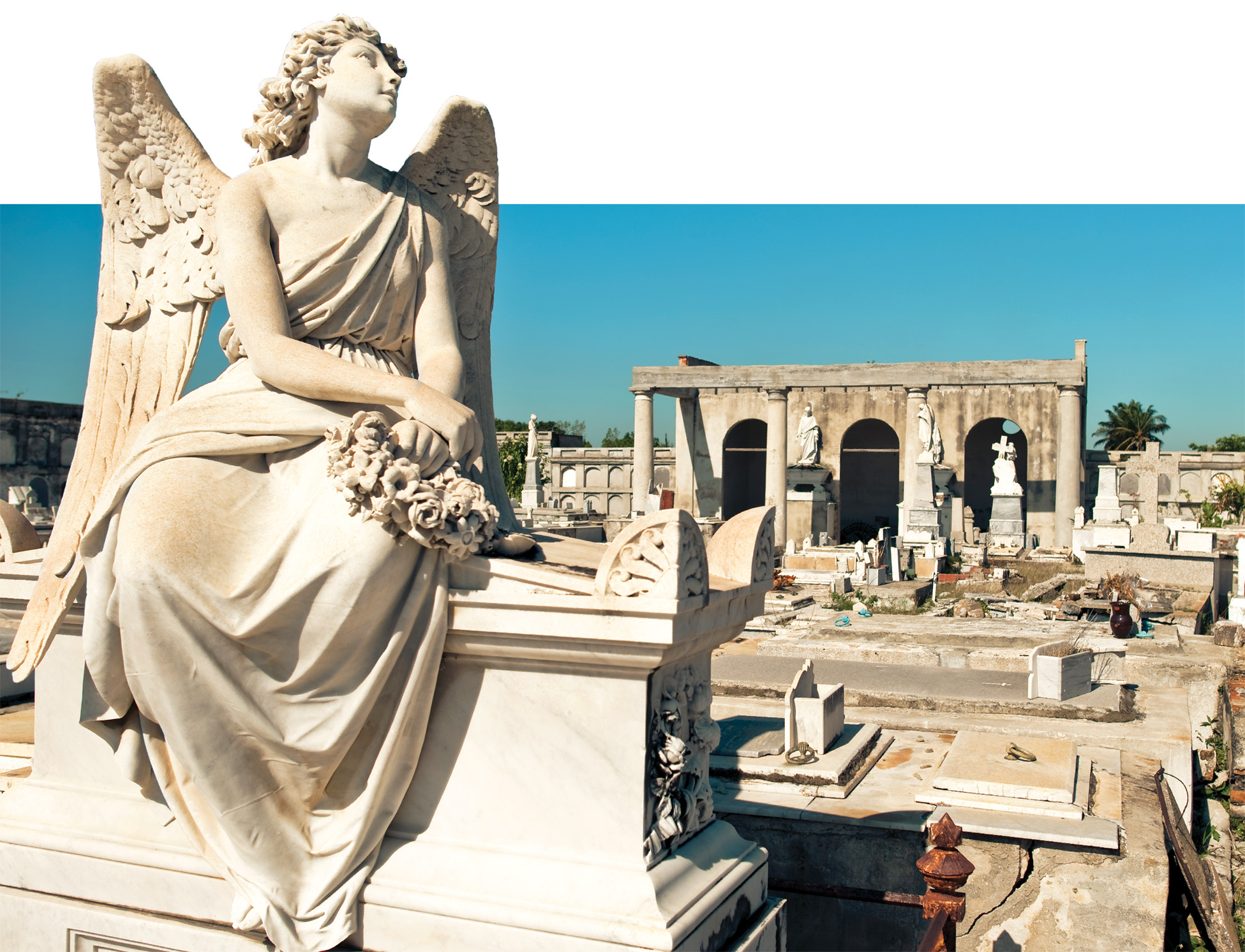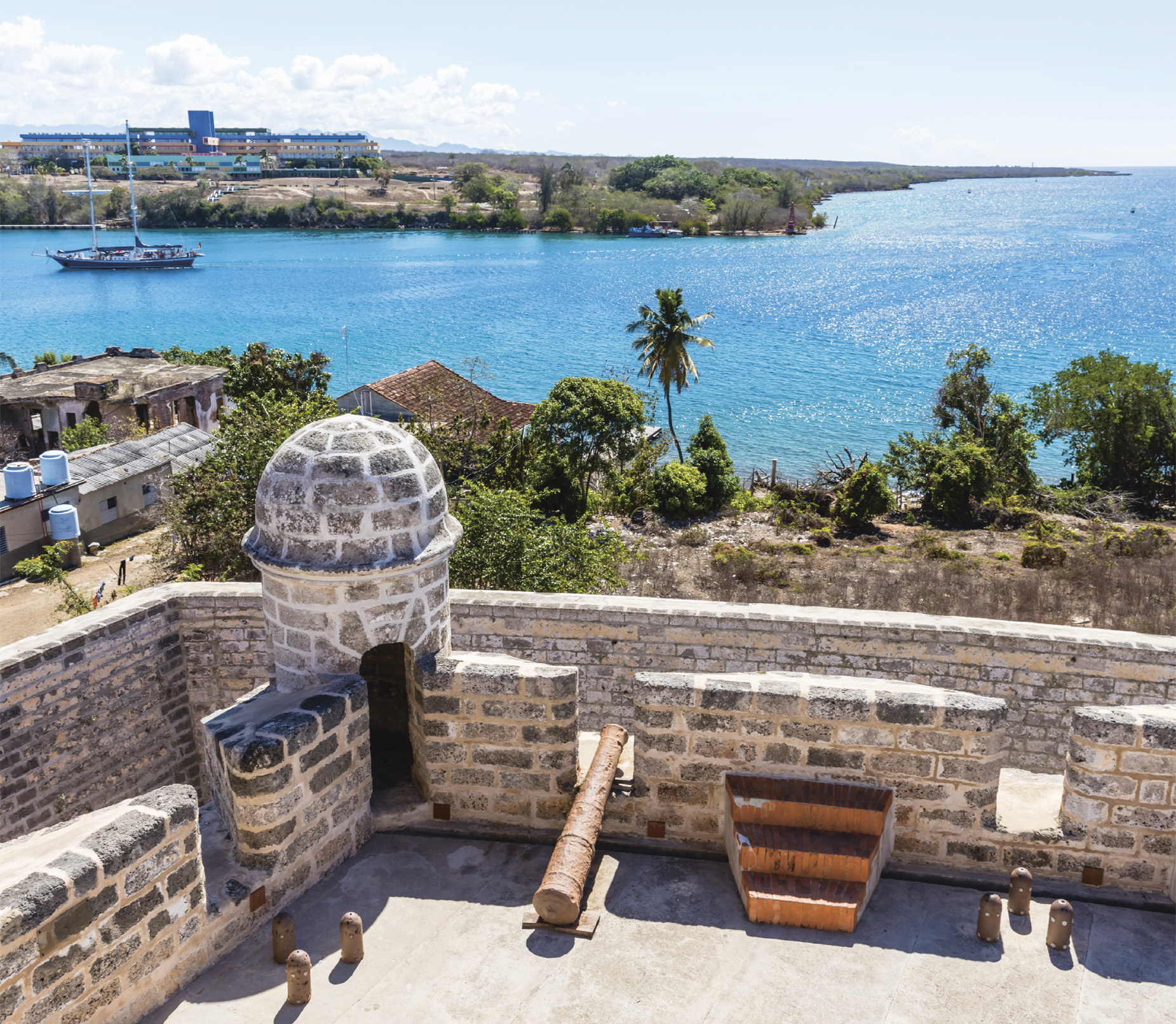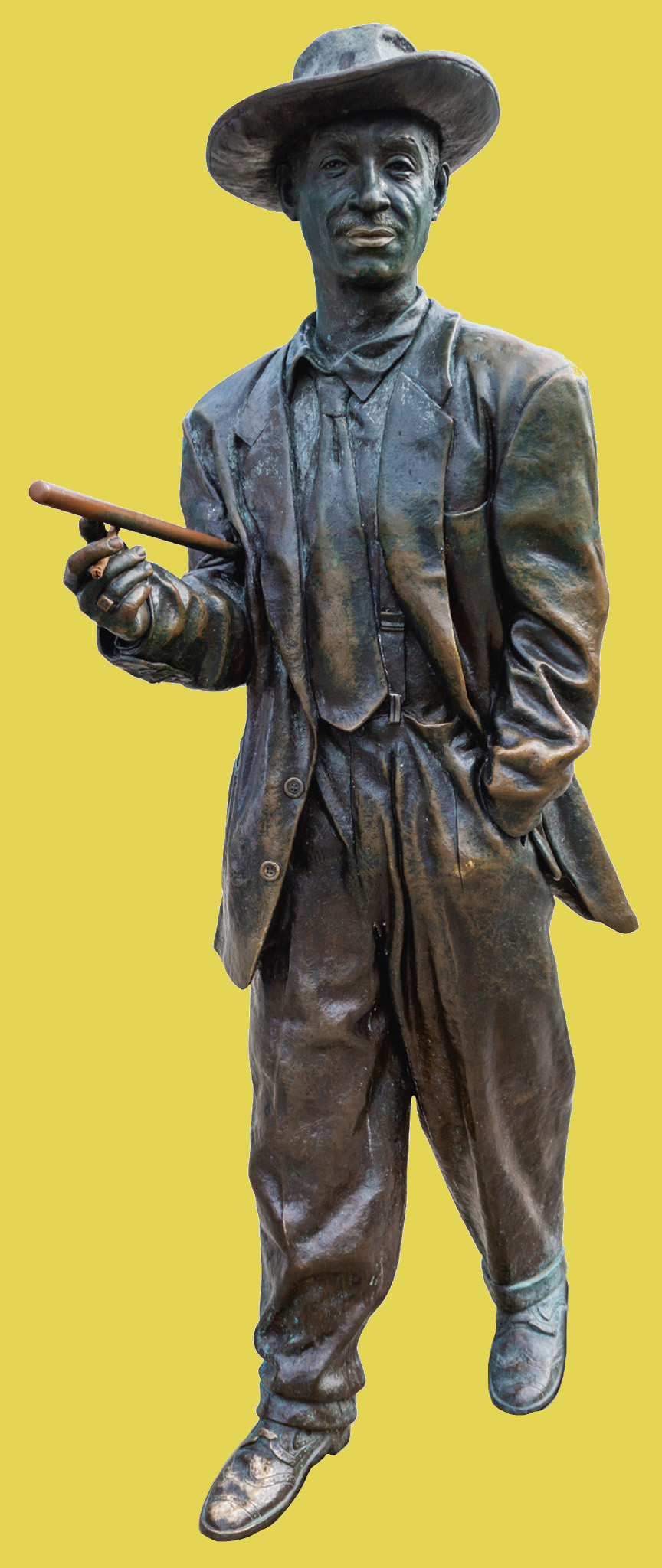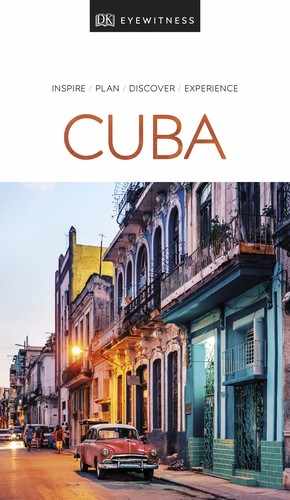
t The grand Antiguo Ayuntamiento in Parque Martí
Experience Central Cuba – West

n Double-tap image to read the labels
The “zero kilometre”, the central point of Cienfuegos, is in the middle of Parque Martí, the former Plaza de Armas (parade ground). The vast square has been declared a national monument because of the surrounding buildings and its historic importance. It was here that the foundation of Cienfuegos was celebrated with a solemn ceremony in the shade of a hibiscus tree, chosen as a marker for laying out the city’s first 25 blocks.
Lions on a marble pedestal flank a monument to José Martí, erected here in 1906. One side of the square is entirely occupied by the Antiguo Ayuntamiento, now the home of the provincial government assembly, supposedly modelled on the Capitolio in Havana.
This theatre was built from 1886 to 1889 to fulfil the last will and testament of Tomás Terry Adams, an unscrupulous sugar factory owner who had become wealthy through the slave trade and held the position of mayor. World-famous figures such as Enrico Caruso and Sarah Bernhardt performed here in the early 1900s.
The Italian-style theatre was designed by Lino Sánchez Mármol, with a splendid two-tiered auditorium and a huge fresco by Camilo Salaya, a Philippine-Spanish painter who moved to Cuba in the late 1800s. The austere façade on the Parque Central has five arches corresponding to the number of entrances. The Byzantine mosaic murals on the pediment, made by the Salviati workshops in Venice, represent the muses.
The cathedral of Cienfuegos, constructed between 1833 and 1869, is one of the major buildings on the city’s central square. Its distinguishing features are the Neo-Classical façade with two bell towers of different heights, and its stained-glass windows.
Did You Know?
Cienfuegos was named after the first Cuban Governor General in 1829.
Cienfuegos’s Provincial Museum is located in the former Casino Español, an eclectic-style building first opened in 1896. The furniture, bronze and marble objects, and crystal and porcelain collections bear witness to the refined taste and wealth of 19th-century families in Cienfuegos.
This palace, which houses the Casa Provincial de la Cultura, was built in the early 1900s by the sugar magnate José Ferrer Sirés. Famous tenor Enrico Caruso is said to have stayed here when he performed at the Teatro Tomás Terry.
The building stands on the western end of the plaza and is the most bizarre and eclectic in the square. It is distinguished by its cupola with blue mosaic decoration. It is worth climbing up the wrought-iron spiral staircase to enjoy the fine views over the city.
Experience Central Cuba – West
|
STAY Hostal Bahía This casa particular has bay views and a gourmet restaurant. ⌂ Avenida 20, 3502 § (43) 526 598 \ Hotel Meliá Jagua This 1950s hotel has heaps of retro charm. ⌂ Calle 37 e/ 0 y 2 ∑ meliacuba.com \ Hotel Meliá San Carlos Opened in 2018, this downtown, historic hotel offers true luxury. ⌂ Avenida 56 e/ 33 y 35 ∑ meliacuba.com \ |
The liveliest street in town is known for its elegant, well-preserved buildings and the monuments honouring leading local figures. It crosses the historic centre and goes south as far as Punta Gorda on the tip of the bay. It was laid out in 1922.

t A multitude of beautiful tombs in the Cemeterio General La Reina
The municipal cemetery of La Reina is located at the western end of the city, and has been declared a national monument. It’s not hard to see why – laid out in the 1830s, this is a beautiful Neo-Classical cemetery. Don’t miss the famous funerary statue of La Bella Durmiente (Sleeping Beauty), leaning against a cross and cradling flowers.
This monumental cemetery lies in the eastern suburb of Cienfuegos. Varied in stylistic influences, it was conceived as a large garden with paths and fruit trees. The entrance is a replica of Athens’s Parthenon.
Housed in the town’s rose- pink naval barracks, on the Cayo Loco peninsula, is the most important naval museum in Cuba. It features a series of documents concerning the local anti-Batista insurrection of 5 September 1957, and an interesting display recording the history of the Cuban Navy.
Experience Central Cuba – West
|
Shop Galería Maroya On the south side of Plaza Martí, Cienfuegos’s largest art gallery and souvenir outlet sells a broad range of works, from silver jewellery and guayaberas (embroidered cotton shirts) to lacquered humidors and avant-garde paintings. ⌂ Avenida 54 2506 § (43) 551 208 |
At the southern tip of the bay of Cienfuegos lies Punta Gorda, the aristocratic quarter of the city in the early 1900s, which affords a lovely panoramic view of the bay. A short walk along the seafront takes you past many attractive villas and various brightly coloured wooden houses can be seen as you approach the tip of the peninsula. These buildings were modelled on the American prefabricated “balloon frame” homes that were so much in vogue in the early 20th century.
The most original building in the Punta Gorda quarter, Palacio de Valle was designed by the Italian architect Alfredo Colli between 1913 and 1917. The architect was engaged by the sugar merchant Acisclo del Valle Blanco, one of the wealthiest men in Cuba in the 20th century.
The two-storey building, which is now a restaurant, is lavishly decorated with Gothic, Venetian and Neo-Moorish motifs, much in the Arab-Spanish style of the Alcázars in Granada and Seville. The façade has three towers of different designs symbolizing power, religion and love. The terrace is open to the public.

t View over the bay from the balustrade of Castillo de Jagua
Built by engineer José Tantete, following a design by Bruno Caballero, to protect the bay and the region from Jamaican pirates, the Castillo was the third most important fortress in Cuba in the 18th century and the only one in the central region of the island. The original moat and drawbridge are still intact.
According to legend, the citadel was haunted by a mysterious lady dressed in blue, who every night walked through the rooms and corridors, frightening the guards. It is said that one morning one of the guards was found in a state of shock while wringing a piece of blue cloth in anguish. The unfortunate man never got over this experience and ended up in an asylum.
At the foot of the Castillo is the fishing village of Perché, whose picturesque wooden houses are in striking contrast to the majestic military structure above. Most visitors arrive by ferry here from the dock in Cienfuegos.
Experience Central Cuba – West
Benny Moré

A great source of pride to Cienfuegos is Maximiliano Bartolomé Moré, better known as Benny Moré, who was born at nearby Santa Isabel de las Lajas in 1919. Moré inspired many generations of Cubans with his unique voice, which enabled him to interpret a variety of musical genres. For this reason the artist was nicknamed el bárbaro del ritmo (the barbarian of rhythm). He was self-taught, and when still quite young performed with famous orchestras such as those led by the Matamoros brothers and Pérez Prado. He died in the early 1960s. For some time Cienfuegos – which he proclaimed to be “the city that I like the most” in his song about the city – has paid tribute to him with the Benny Moré International Festival.
